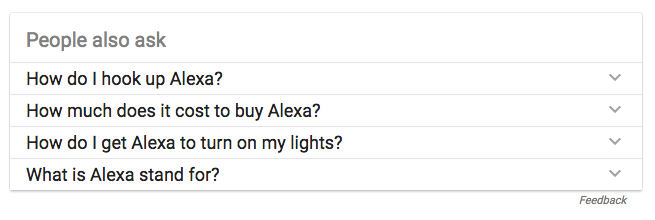
by Nick Eber, VP, Consumer, Imre
“Alexa, how do I turn this on?”
Alexa may be getting smarter everyday, but are consumers keeping up? As the world becomes more connected through smart devices and manufacturers hurry to push through the latest technology, many homeowners are overwhelmed by all the choices. Consumers are wondering if they really need smart appliances, let alone thermostats. Meanwhile, the marketing is becoming increasingly disconnected from the audience, stalling wider adoption.
A simple Google search of “Alexa” sheds light on some of the problems. (And yes, I recognize the irony.)

Ad position: web_incontent_pos1
While spending on homes in many categories like appliances and flooring is increasing, smart home purchases have not been prioritized. The money and intrigue is there, but how do you get homeowners to actually buy the products?
Here are five strategies to consider when developing a marketing plan for smart home products of any size and function.
Ad position: web_incontent_pos2
Show a Smart Life Reality
Start by appealing to fundamental drivers for purchase in this category – convenience, security, aesthetics, total cost, and life events, like moving into a new home, then show how a realistic tech future fits into the consumer’s lifestyle.
Keep It Simple
The product should to be easy to use – but if it’s not, strong education content can reassure consumers that they’ll be able to operate this new device. Develop plenty of resources, including short videos, that show how to install and use the product properly, and make them widely available and easy to locate. And don’t stop online. There’s a reason why Lowe’s created a smart home store-within-a-store concept that it ultimately expanded to 70 stores. Homeowners need to see it and touch it to believe it.
Help Make the Best Choice
Our client Kwikset found that confusion is one of the top barriers to purchasing smart locks. To help people choose the right smart lock, we developed lifestyle videos and interactive decision-tree content targeted to different audience segments based on behaviors, attitudes and interests.
This video, distributed on YouTube, Facebook, and Instagram, introduced the smart lock to audiences most likely to purchase it and showed how the product could benefit people with a variety of lifestyles. We then educated those segmented audiences about the different smart locks through a video series that paired product features with lifestyle benefits and quickly followed up with a retargeted ad that drove to the landing page.
Leverage Brand Recognition and Platform Integration
Look to the mobile space, where Apple, Samsung and Google are some of the world’s most trusted brands – ones that also control most of your smart home devices. Mintel’s Mobile Phones – US, June 2017 report found that 85% of adults owned a smartphone operating on either iOS or Android. And while only 11% of smartphone owners currently use their smartphone to control the lighting or climate of their home, 52% would like to do so.
Smaller brands should integrate with systems like Apple HomeKit, which has more familiarity, to increase awareness and purchase. Don’t get lost in the empty promise of having your own app if it’s not necessary. Partnering with other brands and synching services can make the user experience friendlier.
Do It for Them
It’s true: most smart home devices require limited DIY skills. But if they’re spending a premium, homeowners, a majority of whom are not Millennials or Boomers that might have technology trepidation, want to make sure they’re getting the most out of their products – piece of mind. This requires an investment in service and accessibility to real experts.
There’s a lot you can offer in terms of digital services – such as creating custom chatbots to serve up on-demand videos or simply making customer service a priority on your social channels. But there is also currently a market need for more services like Enjoy that provide delivery and set-up at no additional cost. Sonos has branded theirs up&running™, which speaks to both the demand for immediacy and support.
It’s been said that business has only two functions: marketing and innovation. In this case, marketing will drive innovation in the home … where there is plenty of room to grow.
“Alexa, you’re in control now.”
More from Digiday
Sliders test article
Agencies hope connected TV and digital out-of-home will play a bigger role in upcoming elections and politics — especially for smaller media agencies that are handling many of the less visible races in the crowded political space. For a number of media agencies looking to place their political ad dollars down in this major election […]

How CTV and DOOH are growing this political season for smaller agencies
Connected TV and digital out-of-home are playing a bigger role in upcoming elections and politics – especially for smaller agencies looking to place clients’ dollars.

CMO Strategies: Advertisers identify the top attributes on ad-supported streaming platforms
This is the third installment in Digiday’s multi-part series covering the top ad-supported streaming services and part of Digiday’s CMO Strategies series. In this report, we examine which ad attributes matter the most to marketers on streaming platforms.
Ad position: web_bfu